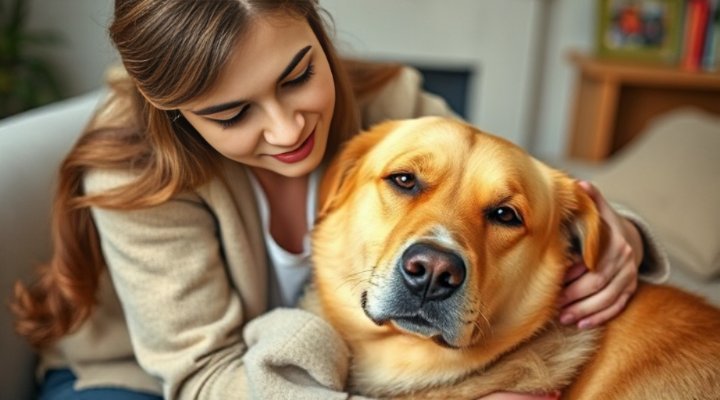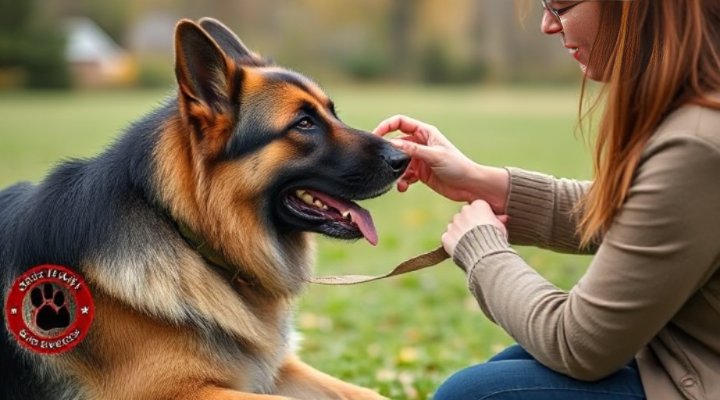Dog anxiety is more common than many pet owners realize, affecting up to 40% of dogs at some point in their lives. Whether it’s separation anxiety, noise phobias, or general nervousness, anxiety for dog can significantly impact their quality of life. Fortunately, modern science has provided us with numerous effective methods to help our canine companions feel more secure and confident.

Understanding the Root Causes of Dog Anxiety
Before we can address anxiety in dogs, it’s crucial to understand what might be causing it. Common triggers include past trauma, lack of proper socialization, changes in environment, or even genetic predisposition. For instance, some breeds like Border Collies and German Shepherds are more prone to anxiety than others. That is to say, while all dogs can experience anxiety, some may need extra support.
Interestingly, many cases of dog anxiety stem from what we might consider normal situations. Thunderstorms, fireworks, or even vacuum cleaners can trigger intense fear responses. Meanwhile, separation anxiety – one of the most common forms – occurs when dogs become distressed when left alone. According to the American Veterinary Medical Association, separation anxiety affects about 20% of dogs in the U.S.

Scientifically Proven Methods to Reduce Anxiety in Dogs
1. Creating a Safe Space
One of the most effective ways to help an anxious dog is by providing them with a designated safe space. This could be a crate (as discussed in our guide on choosing the perfect crate), a quiet corner with their bed, or even a special blanket. The key is consistency – this space should always be available when your dog feels overwhelmed.
2. Positive Reinforcement Training
Positive reinforcement isn’t just for teaching tricks – it’s a powerful tool for managing anxiety for dog. By rewarding calm behavior with treats, praise, or play, you help your dog associate previously scary situations with positive outcomes. For example, if your dog is afraid of thunderstorms, you might give them treats when it rains to create new, positive associations.

3. Environmental Enrichment
Boredom can exacerbate anxiety in dogs. Providing mental stimulation through puzzle toys, scent games, or regular training sessions (like those in our Golden Retriever training guide) can significantly reduce stress levels. Above all, a tired dog is generally a calmer dog.
4. Calming Supplements and Pheromones
Science has given us several safe, natural options to help calm anxious dogs. Products containing L-theanine, melatonin, or CBD (where legal) can be helpful for some dogs. Similarly, synthetic pheromone diffusers mimic the calming pheromones mother dogs produce to comfort their puppies.

When to Seek Professional Help for Your Dog’s Anxiety
While many cases of anxiety for dog can be managed at home, some situations require professional intervention. If your dog’s anxiety is severe, causing self-harm, or significantly impacting their quality of life, it’s time to consult a dog behaviorist or veterinarian. They can assess whether medication might be appropriate or develop a customized behavior modification plan.
The ASPCA recommends seeking help if your dog’s anxiety leads to destructive behaviors, excessive vocalization, or elimination issues. Remember, there’s no shame in needing professional support – your dog’s well-being is what matters most.

Preventing Anxiety in Puppies
Prevention is always better than cure, and this holds true for dog anxiety as well. Proper socialization during the critical puppy period (3-14 weeks) can significantly reduce the likelihood of anxiety developing later. Our puppy obedience training guide covers essential socialization techniques that can help prevent anxiety issues.
Similarly, establishing routines and using positive reinforcement from the beginning creates a sense of security. Puppies raised with consistent, gentle training are less likely to develop severe anxiety as adults. That is to say, the foundation you build early on can have lifelong benefits for your dog’s mental health.
Long-Term Management of Dog Anxiety
Managing anxiety in dogs is often an ongoing process rather than a one-time fix. Consistency is key – maintaining routines, continuing training, and being patient with setbacks will yield the best results. Most importantly, celebrate small victories. Every moment your dog remains calm in a previously stressful situation is progress worth acknowledging.
Remember, every dog is unique. What works for one anxious dog might not work for another. Be prepared to try different approaches and combinations of methods until you find what works best for your furry friend. With time, patience, and the right scientifically-backed techniques, you can significantly improve your dog’s quality of life.
Related Keywords:
- dog anxiety symptoms
- how to calm an anxious dog
- separation anxiety in dogs treatment
- best calming treats for dogs
- dog anxiety medication
- natural remedies for dog anxiety
- dog anxiety vest
- signs of stress in dogs
